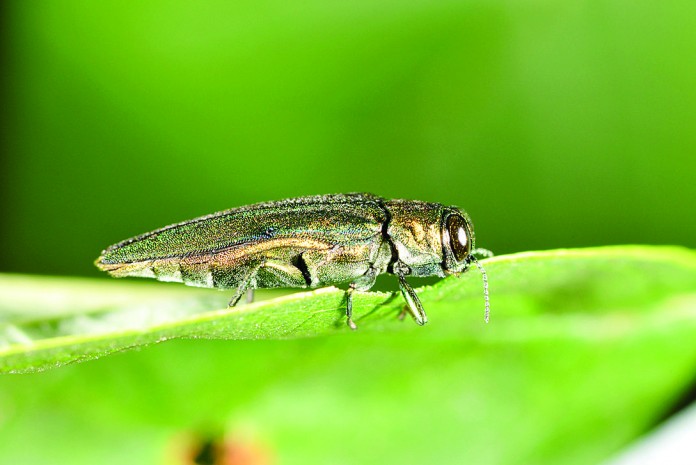
By DAN KRAMER
Has the world really gotten smaller? Well, no, but the word ”global” is often used these days to describe how our vast planet has seemingly shrunk. It’s a global economy, a global society, a global marketplace.
Is it also becoming a global ecosystem? The local prevalence of non-native invasive species of plants and animals makes a strong case that it is.
They’re everywhere
We have to look no further than the starlings feeding among the dandelions in our yards to find invasive species. In fact, most of the very agricultural crops that we depend on for food have their origins outside of our borders.
The landscape of this country has undergone a radical change in the makeup of species to be found here since settlement.
Non-native
Invasive species are those that did not occur here naturally and were either deliberately or accidentally introduced through man’s actions. By some accounts, there are nearly 50,000 invasive species in this country; half of them are plants and most of the rest are pathogens or diseases with lesser numbers of insects and vertebrate animals.
Some examples of invasive species that you may know or have heard of include: plants such as bush honeysuckle, glossy buckthorn, Japanese knotweed, purple loosestrife, and garlic mustard; insects such as the Asian longhorned beetle, emerald ash borer, and gypsy moth; aquatic species such as zebra mussels, quagga mussels, spiny waterflea, common carp, and Asian carp; and terrestrial animals such as feral hogs, Norway rats, (English) house sparrows, and common pigeons.
How’d they get here?
How these species arrived on North American shores is often extremely interesting. However, keeping the horse in the barn is always preferable to expending time and energy chasing it once it’s loose.
The intentional release of ballast water from international shipping operations has been identified as the pathway for the unintentional introduction of invasives such as zebra mussels to the Great Lakes ecosystem.
Emerald ash borer beetles and Asian longhorned beetles are believed to have arrived in infested lumber or in wooden pallets or other wooden packing material.
Still other species like feral hogs, nutria (a South American wetland rodent), and ring-necked pheasants were deliberately relocated and released here as formerly domesticated livestock or as animals valued for wild game or fur.
Few predators
Invasives generally outcompete natives and often have few or no predators leading to detrimental changes to the ecosystem.
These changes can have significant economic as well as environmental consequences. Billions of dollars are spent to limit the spread of some invasive species that threaten the populations or health of agricultural crops, timber, or commercial fisheries.
Emerald ash borer beetles first invaded Ohio from neighboring Michigan in the 1990s. They have since killed perhaps tens of millions of native ash trees, causing millions of dollars of damage… and they are continuing to spread.
Asian carp, also known as bighead or silver carp, have become established in the Mississippi River and its tributaries since escaping from southern fish farms. These are the infamous “flying fish” we’ve all seen in YouTube videos as they jump from the water when disturbed by passing boats and very often into those same boats. They are very prolific feeders of plankton.
Their large size, breeding potential, and appetite quickly result in damage to native fish populations including endangered species such as paddlefish. Efforts are ongoing to keep them from reaching the Great Lakes where they could severely impact the commercial and sport fishing industries costing local economies billions.
Heed warnings
Knowledge of these invasive species, their presence, and their potential for damage are keys to conquering them and keeping them in check.
Heed the warnings and prohibitions against moving firewood and other activities that may be avenues for relocation. Buy only native plants and use seed that is free of invasive weed seeds. Remove garlic mustard, Japanese knotweed, purple loosestrife and other invasives from your property.
And report occurrences of new invasives to authorities such as the Ohio EPA, Ohio DNR, or the OSU Extension.
Early detection and rapid response could prevent the next major invasion to threaten our increasingly global ecosystem.
(Dan Kramer is a district technician with the Tuscarawas Soil and Water Conservation District. He can be reached at 330-339-7976.)












